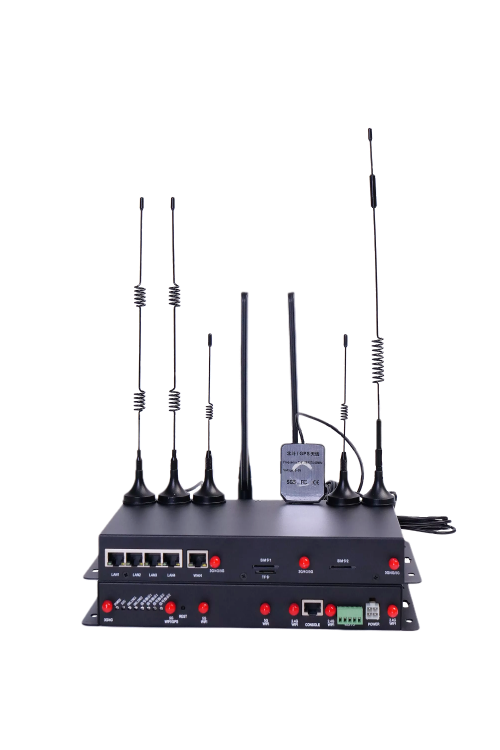UPS power supply intelligent remote monitoring and management application
Time:2021-06-23 Source:1. Overview
UPS (Uninterruptible Power System), that is, uninterruptible power supply, is a kind of
The converter is a constant voltage and constant frequency uninterruptible power supply which is the main component. Mainly used for single computer, computer network system or
Other power electronic equipment provides uninterrupted power supply. When the mains input is normal, the UPS will stabilize the mains and supply it to the load. At this time, the UPS is an AC mains voltage stabilizer, and it also charges the battery in the machine; when the mains is interrupted (accidental power failure) When the time, the UPS immediately uses the power of the battery in the machine to continue to supply the required AC power to the load through the method of inverter conversion, so that the load can maintain normal operation and protect the software and hardware of the load from damage. UPS equipment usually provides protection for both over-voltage and under-voltage.
2. Status of UPS
UPS is aimed at the reliability requirements of power grid environment and network monitoring, network system, medical system, etc.
The problem of increasingly harsh power supply grid environment caused by centralized power supply in server and large-scale computer network systems. UPS and DC power supply are important power supply guarantee equipment for enterprises. Traditional maintenance management includes:
(1) Routine inspection of the appearance, regular replacement of wearing parts such as batteries, filter capacitors, fans, etc., and battery activation during major repairs;
(2) Transform or adopt replacement equipment, and use advanced tools to test battery performance.
This kind of management method has high investment cost for enterprises, heavy workload of maintenance personnel, it is not easy to grasp equipment operation status and key data in real time, and equipment accident prevention ability is low.
UPS is widely used in various fields, and it is more and more common to install UPS power supply system in communication room. The use environment of UPS determines the importance of UPS monitoring. It only relies on operation and maintenance personnel on duty several times a day or professional and technical personnel several times a week. On-site inspections and inspections cannot meet the requirements. If a fault occurs, it will not be able to find and control the equipment in time. Emergency treatment will cause heavy losses. The use of remote monitoring solutions can facilitate cluster management of distributed UPS, early warning, etc.
3. System Application
UPS monitoring is to collect data from the uninterrupted power supply in the computer room. Through remote transmission, unified monitoring and management are carried out on the PC in the central computer room, which is convenient for the person in charge of the computer room to carry out effective management, which greatly saves all aspects of costs and can be realized at the same time. Unattended for 24 hours.
3.1 Topological structure diagram
This system uses the public cellular network to realize the remote collection of UPS power related parameters by the server. After Caimore 4G DTU establishes a TCP/UDP communication connection with the server, it can carry out two-way transparent data transmission. The effect is equivalent to monitoring software for local collection, real-time viewing and monitoring of UPS operation, and regular maintenance and inspection.

3.2 System composition
The entire UPS power remote monitoring system is composed of three parts: front-end UPS, wireless transmission equipment 4G DTU, remote monitoring center.
(1) Front-end UPS
UPS has become an indispensable important equipment in the computer room. However, as the last guarantee for the power supply of the computer system, the effectiveness and reliability of the UPS work is becoming a new hidden danger of information security. Real-time monitoring, UPS monitoring content includes: UPS input voltage, current, frequency, output voltage, current, load, battery voltage and UPS status, UPS alarm status, etc. UPS status includes normal operation, bypass operation, battery power supply, etc. UPS alarms include UPS faults: rectifier faults, inverter faults, battery faults and other faults. It is mainly monitored based on the content provided by the UPS protocol.
(2)Transmission equipment DTU
The transmission equipment is Caimore 4G DTU, which mainly uses the operator's network to realize the communication between the front-end equipment and the remote monitoring center. After the 4G DTU is powered on, first read the working parameters saved in the internal FLASH, and perform PPP dialing according to the parameters. After the dial-up is successful, the 4G DTU will obtain an internal IP address (usually 10.X.X.X) randomly assigned by the operator. This address is usually not fixed. Then the 4G DTU actively initiates a communication connection with the data center and keeps the communication connection always present. If the communication connection is interrupted, the 4G DTU will immediately re-shakes hands with the center. Since 4G DTU actively connects to the data center, this requires the data center to have a fixed public IP address or a fixed domain name. After the TCP/UDP communication connection is established, the two-way data communication between the serial port and the network can be carried out.
(3) Remote monitoring center
The remote monitoring center facilitates the administrator to perform UPS real-time status query, basic information management, remote operation control, various parameter settings, user management and other monitoring management functions. The monitoring software can graphically or digitally display UPS input, output voltage, load status, battery capacity, internal temperature, mains frequency, and basic UPS information and working status. When the UPS is in an abnormal state (such as mains power failure or UP failure, etc.), an alarm can be issued to remind the attendant to pay attention. For important UPS operating parameters, the system can record the curve, and the storage time of the curve can exceed 1 year. A convenient location query line is provided in the curve, which can display specific parameter values and maximum values, minimum values, average values, etc., so that the administrator can fully understand the operating status of the UPS, and promptly discover, prevent, or solve various problems that occur in the operation of the UPS. problem. The monitoring software can also pre-set the authority of each user, restricting only network management personnel with specific addresses and passwords to operate.
3.3 System function
Support UPS weather real-time monitoring and management;
Realize remote control and maintenance of UPS power supply. Reduce the difficulty of UPS management and improve work efficiency;
Support multi-center, multi-site real-time monitoring;
The network is simple, no on-site wiring is required, and the existing cellular network is used to realize remote data transmission;
The powerful data statistics function facilitates the administrator to discover, prevent or solve various problems in UPS operation in time;
The system is highly scalable, allowing subsequent devices to be added directly without changing the existing network architecture.
4. System Summary
The UPS remote monitoring system based on the cellular network makes full use of the wide coverage, high bandwidth, and mobility of the wireless network. The system can help the operation and maintenance personnel to grasp the UPS operating status and health status in real time, and discover problems and potential hazards in time, so as to facilitate early operation, maintenance and troubleshooting, and ensure the safe and stable operation of the UPS system. The traditional UPS monitoring system has complex network structure, troublesome wiring, high cost, and is not easy to manage. And this remote monitoring is simple to implement. Xiamen Caimore 4G DTU plays a very important role. You only need to install Caimore 4G DTU on site, connect to UPS and perform a brief configuration, to provide the system with wireless long-distance data two-way transmission function. Stable and reliable work, low power consumption, simple and practical. The use of wireless remote monitoring solutions facilitates cluster management of distributed UPSs and provides early warning effects.




